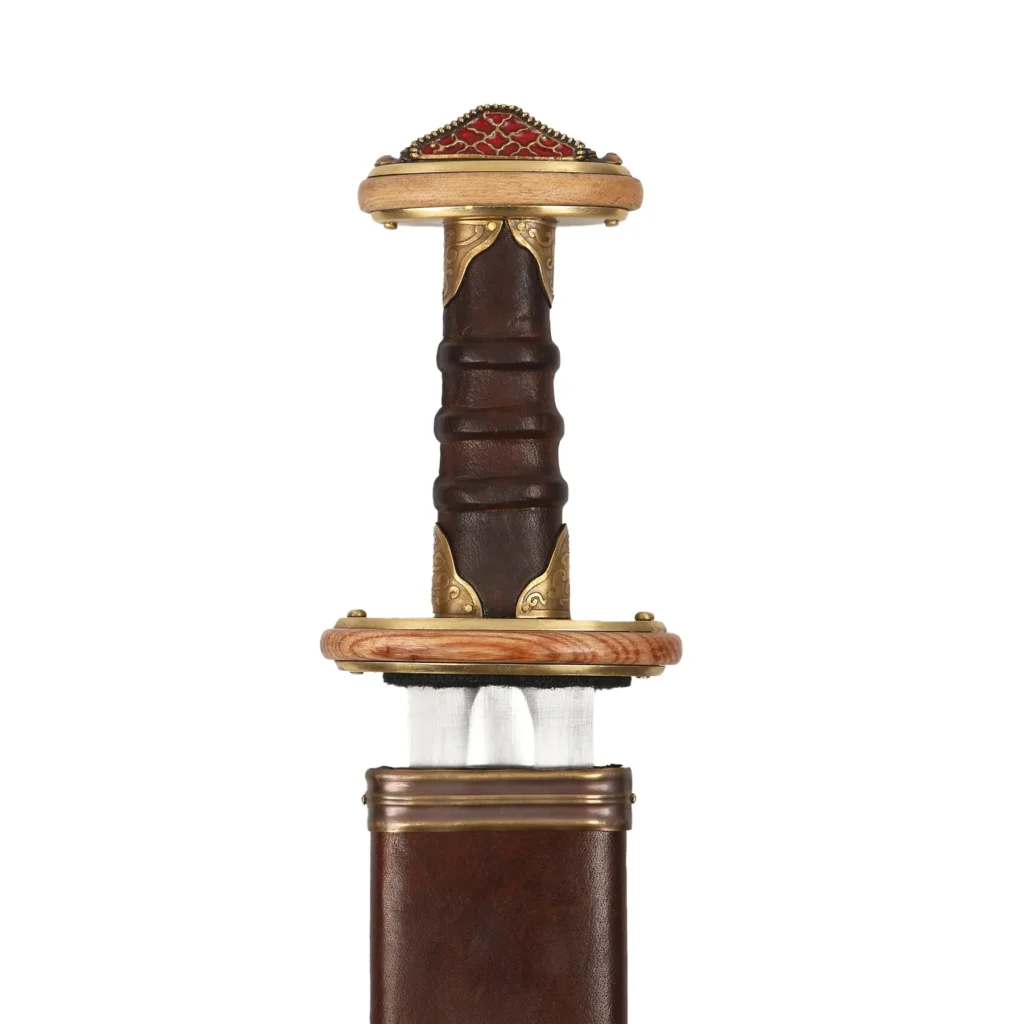The Leftie King

Sue Brunning, curator of European Early Medieval Collections at the British Museum, noticed something else about the Sutton Hoo sword. One side of the pommel was subtly more elaborate and ornate than the other. Brunning realised that the more ornate side faced outwards when the sword rested in its scabbard.
The most common way to wear a sword then was for it to hang at rest quite high up the trunk, with the pommel just below the heart, alongside the torso. As such, the pommel made an ideal hand rest.
With this high position for the sword, the natural way to draw the sword was with the opposite hand, drawing it across the body.
So, a right-handed swordsman would carry the sword on his left. But the Sutton Hoo sword had the richer side of its pommel design on the wrong side if it was worn on the left: sitting there, the less elaborate side of its design would have been on display. The wear patterns on the pommel were also wrong if it had been worn on the left.
Brunning realised that the only sensible explanation was that the wearer of the Sutton Hoo sword had been left-handed.
It’s not often that we can learn such an intimate detail about a person who lived 1,500 years ago and whose name we do not even know for certain. If the sword’s wielder was Rædwald, king of the East Angles, history has left us no tale of him being Rædwald Left-Hand. Only the sword tells us that.
0 Comments